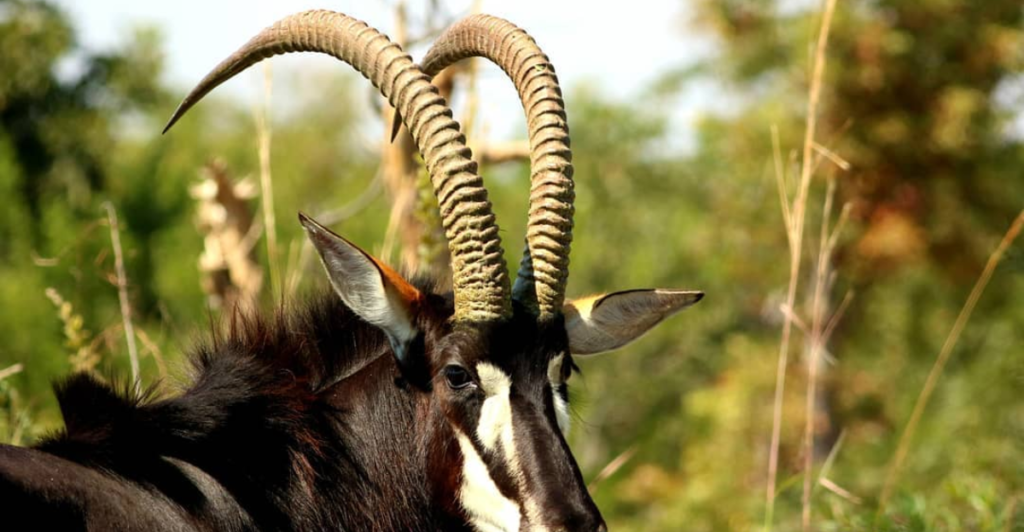
Many animals need horns as either a defense against predators or to displays of dominance during mating rituals. Depending on the role, horn size and shape can change dramatically. These horns reflect the adaptability of these animals to their environments, highlighting the fascinating ways nature evolves traits for survival.
Asian Water Buffalo

The Asian water buffalo is renowned for its impressive horns, reaching around 6 feet long. Found primarily in India and Southeast Asia, these horns are large and curved, making them formidable tools for defense against predators.
Moose

The moose is the largest species of deer, known for its massive antlers, which can span up to 6 feet. Moose inhabit forests across North America and parts of Europe, where their antlers help them navigate dense vegetation.
Greater Kudu

The greater kudu is a striking antelope native to Africa, famous for its long, spiral horns that can grow over 6 feet in length. Males possess these impressive horns, which they use in displays of strength during mating rituals. The kudu’s elegant appearance and unique horns make it a sought-after sight for wildlife enthusiasts.
Markhor

The markhor, a wild goat in Central Asia, boasts unique corkscrew-shaped horns exceeding 5 feet long. These horns are visually stunning and serve practical purposes, helping males establish dominance during fights. The markhor’s adaptability to rugged terrains makes it an intriguing species.
Giant Eland

The giant eland is the largest antelope species, characterized by impressive horns that can reach lengths of up to 4 feet. Both males and females have horns, but males possess larger and more robust ones. These animals are known for their agility despite their size and are often found grazing in African savannas.
Scimitar Oryx

The scimitar oryx, now critically endangered, features long, slender horns that can grow up to 4 feet long. These backward-curving horns are used for defense against predators and during fights with other males. Conservation efforts are ongoing to protect this unique species from extinction.
Sable Antelope

The sable antelope is recognized for its striking appearance and long, backward-curving horns reaching up to 65 inches in length. Both males and females have horns, but males are significantly larger and thicker. This species is known for its agility and strength, making it a formidable presence in the African bush.
Ankole-Watusi Cattle

The Ankole-Watusi, a breed of African domestic cattle, is famous for its enormous, hollow horns that span over 8 feet from tip to tip. These horns help regulate body temperature and symbolize wealth and status among local communities. Their majestic appearance makes them popular in cultural ceremonies.
Addax

The addax, or white antelope, has long twisted horns that can grow over 30 inches long. Adapted to desert life, these animals have a unique ability to survive with minimal water intake. Their horns serve as defense mechanisms and tools for establishing male dominance.
Nubian Ibex

The Nubian ibex, native to mountainous regions of northeastern Africa, sports impressive curved horns that can grow more than 3 feet long in males. These agile animals are well adapted to rocky terrains, using their strong legs and sharp hooves to navigate cliffs while evading predators.
Bighorn Sheep

The bighorn sheep is known for its large, curved horns, which can weigh up to 30 pounds each and be around 3 feet long. During mating season, males use their massive horns in head-butting contests to establish dominance within their groups. This species thrives in rugged mountainous areas across North America.
Black Rhinoceros

The black rhinoceros has two prominent keratin horns, with the front horn typically measuring around 20 – 55 inches long, but some individuals have been recorded with longer ones. These powerful animals use their horns primarily for defense against predators and during territorial disputes with other rhinos.
Source:
12 Animals With The Biggest Horns In The World
Disclaimer: This article was researched and written with the assistance of an AI and edited/fact-checked by a human.
Stay connected with us for more stories like this! Follow us to get the latest updates or hit the Follow button at the top of this article, and let us know what you think by leaving your feedback below. We’d love to hear from you!







